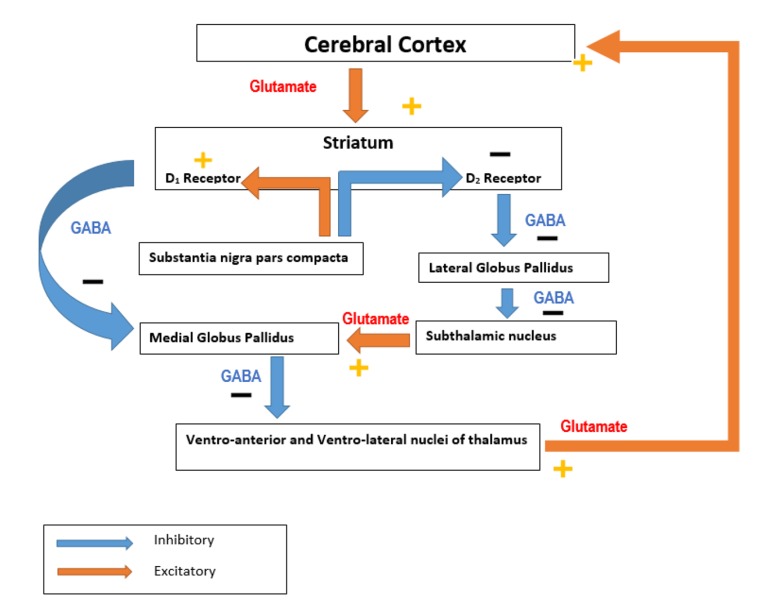Fig. (1).
Direct and indirect pathways of Basal Ganglia in initiating motor activity. In the direct pathway, cerebral cortical input to the striatum causes activation of inhibitory neurons in the striatum which then causes an increased inhibitory output to the globus pallidus internal [GPi]. There is a decreased inhibitory output from GPi to ventral anterior [VA] and ventral lateral [VL] nuclei of the thalamus which then projects via excitatory pathways into the premotor cortex. The direct pathway is involved in regulating tonic excitation in the premotor cortex which is an area involved in planning and initiating movement. The indirect pathway is inhibitory to movement when excitatory projection from cerebral cortex facilitates inhibitory projection neurons in globus pallidus external [GPe]. These then inhibit tonic inhibitory output neurons which decreases tonic inhibition of subthalamic nucleus [STN] resulting in increased excitatory output to GPi. Excitatory input to GPi increases inhibitory output from GPi to thalamus which then decreases excitatory feedback to cerebral cortex leading to inhibition of motor activity. Dopamine promotes action of direct pathway while suppressing the activity of indirect pathway.

